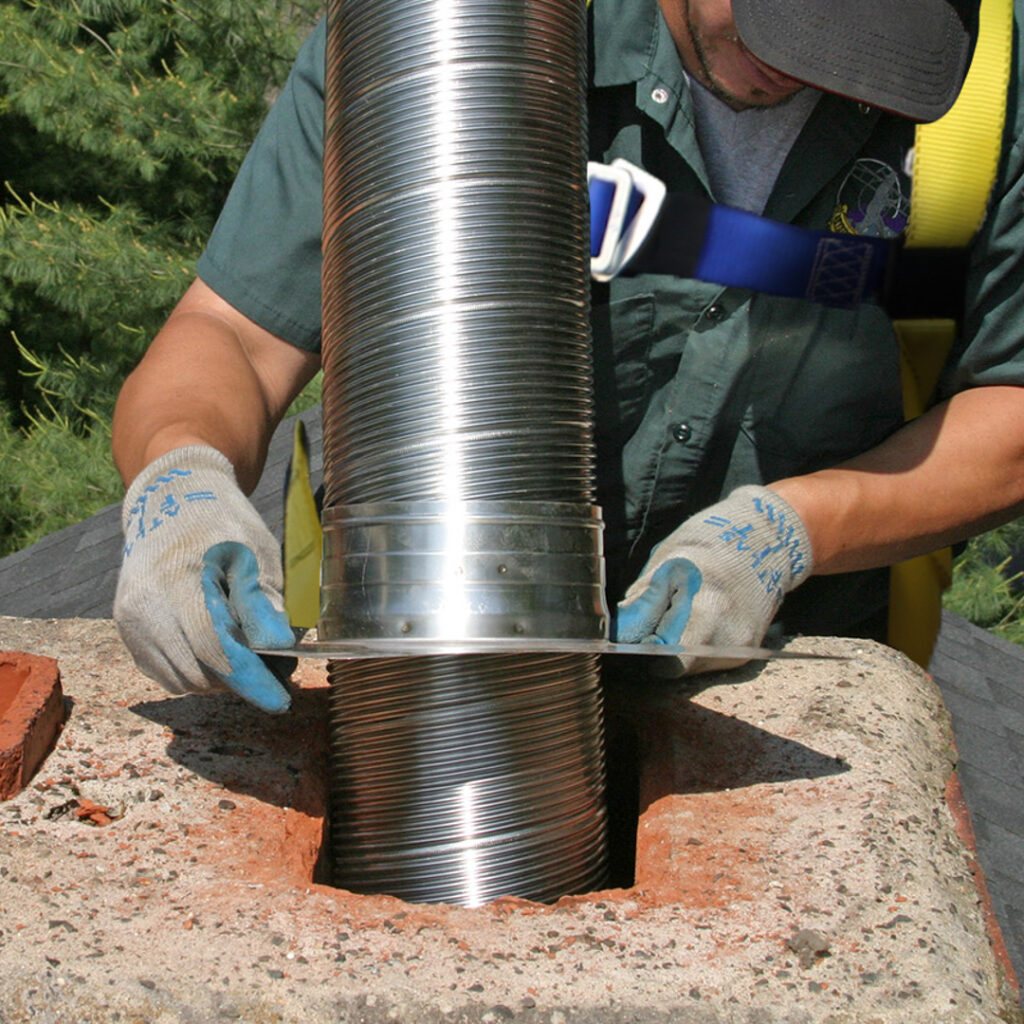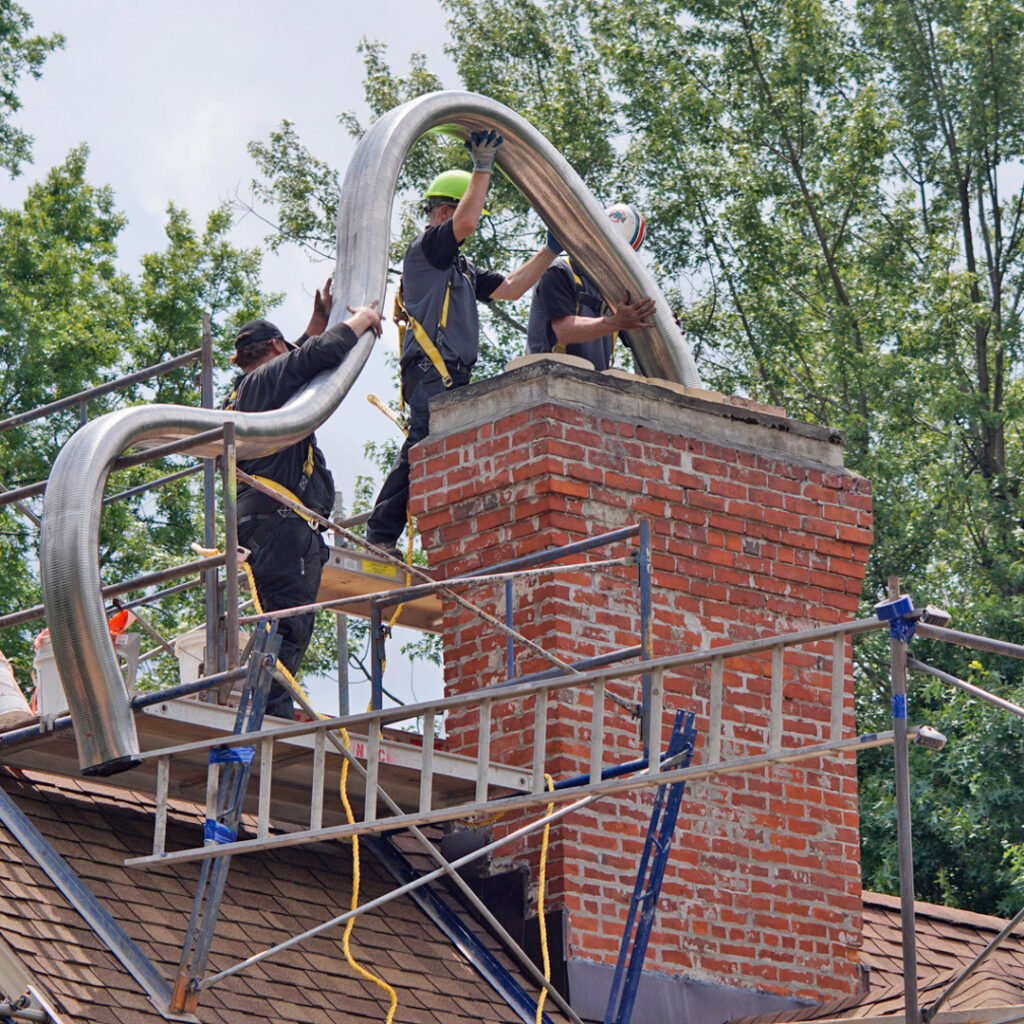Chimney Liner Safety?
When you burn a fire in your fireplace, the heat is intense. A chimney liner is in place to protect the inside of the chimney as well as safeguard the home and the chimney structure. There are potential hazards associated with combustion, as well as corrosive byproducts that are distributed when wood is burned in the fireplace. The liner serves as a protective barrier to shield you and your home from danger.
 Fire Prevention:
Fire Prevention:
Chimney liners help contain the heat and prevent it from transferring to combustible material like wood and insulation that is nearby. Chimneys can overheat and ignite nearby structures, potentially leading to dangerous chimney fires. Stainless steel liners have been proven to be a popular and effective material to use.
Improve Draft:
With a proper liner, exhaust gas will exit the chimney with ease. This will allow for a proper draft and prevent downdrafts.
Gas Leak Prevention:
Liners prevent gases that can be deadly, such as carbon monoxide, from seeping into the home. The masonry may become brittle or cracked, which will allow gases into your home without a liner.
Protecting Masonry:
A liner will protect the bricks and mortar by sheltering the chimney from the extensive heat emitted by the fire. The heat can dry out bricks and cause deterioration.
What Is The Lifespan of a Chimney Liner?
A liner should be up to code to properly protect your home. You can expect to get 15 to 20 years from a chimney liner. Stainless steel liners tend to last longer due to its strength. You can expect to get the maximum longevity with stainless steel compared to a clay liner.
Is It Necessary to Have A Chimney Liner?
It is not a legal requirement to install a liner; however, most professionals would recommend one. Without one, you can expect the walls of the chimney to eventually deteriorate, and smoke will then seep through the cracks, causing dangerous fumes.
What Are My Liner Options?
- Clay Tile Liners. The most common liner. This is the most inexpensive type of liner. However, with the low cost also comes a shorter lifespan. You can expect a clay liner to last 5 to 15 years.
- Metal Chimney Liners. Metal liners are stainless steel or aluminum. They are easy to install due to their lightweight. The cost is much more than the clay tile liner; however, you will benefit from the lifespan.
- Cast-In-Place Chimney Liners. At a lifespan of 50 years, you can imagine this being the most expensive. The cast-in-place liner also contributes to the overall structural stability of the chimney.
 Based on the time you will be in the home as well as your budget, there is a liner for you. The safety benefits are worth the expense. Contact Northeastern Chimney for more information on the type of chimney liner that is best for you.
Based on the time you will be in the home as well as your budget, there is a liner for you. The safety benefits are worth the expense. Contact Northeastern Chimney for more information on the type of chimney liner that is best for you.
Schedule your inspection or cleaning soon by calling Northeastern Chimney. We service all of Hartford, Tolland, and Litchfield Counties. All our chimney technicians are trained and qualified. We are active in the National Chimney Sweep Guild (NCSG). Our technicians have years of experience and are trained and qualified.
The post Chimney Liner Safety? appeared first on .
This post first appeared on https://www.mychimney.com